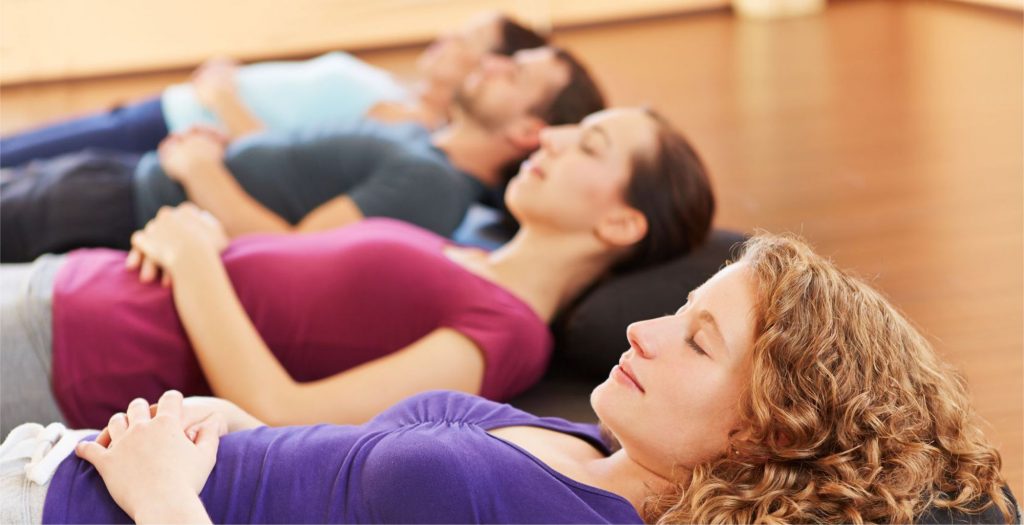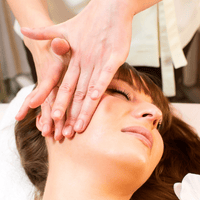 Transformational Breathing ®
Transformational Breathing ®
What's the no 1 most important thing you can do for your health?
As a nation, we spend a fortune in the quest for gaining better health and wellbeing. We try the new ‘best diet ever’, the new exercise fad, the ‘miracle’ supplement or treatment. All of these things can often be very well helpful in supporting our health and recovery but misses the one thing that underpins everything. If you do this properly everything else you do for your health will work dramatically better. So what is this magic thing, that is so important?
Your Breathing of course!
We can go months without food, days without water but only minutes without breathing. Our breathing powers every function in our body, breathe more and our whole organism instantly functions much better. Most people will only be using around 30% of their breathing capacity and many clients I see use even less than this. Is it any wonder that people are all so tired and stressed, when they are hardly breathing? Because of the enormous benefits of TB, it has gained quite a celebrity following with people like Goldie Hawn and is exploding in popularity.
“But my breathing is fine!”
I hear some of you say. This is what I thought right up until I attended my first ‘Transformational Breathing’ (TB) workshop. After 15 years of training in a very traditional form of martial arts and 8 years as a senior instructor, I believed I was a breathing expert. Within about 7 minutes of doing the Transformation breathing exercises I realised that as useful as all my breath training was, it had been teaching me a form of breath ‘control’ rather than the free, natural and totally invigorating breath used in Transformational Breathing. All these years I had missed out on the most important benefits of breathing. Transformational Breathing is about re-establishing our natural breathing rhythm we had as infants and undoing the unhealthy restricted patterns we learnt growing up. The way we breathe reveals a great deal about the automatic behaviours we live by. For instance, if you can only breathe into the upper chest, this represents a person that is open emotionally but not rooted in their power, like a tree with no roots or if you only breathe into the belly and the chest is not moving this reflects a certain disconnect from feeling and expressing emotions. A pause before the in breath reflects fear of stepping forward and we might expect that this person will often have some hesitation or over thinking before taking action. Pausing on the out breath reflects holding on to the past. There are many other subtle things in the breath that are observed and adjusted resulting in permanent improvements in your breathing pattern and any unconscious restricted behaviour patterns. A Transformational Breathing session lasts 1 1/2hrs with 1 hr of this being the facilitated breathing session. This done lying down, the breathing starts deep in the belly (diaphragmatic breath) and comes all the way up to the throat, each breath is connected, so no pausing between the in and out breath and we focus on the out breath being totally relaxed. To facilitate opening the breath, certain places are pressed during the session, this help to relax the muscles and release that part of the body. We also use music to help give the person a faster rhythm to breathe to.
Jonathan is one of only 26 certified practitioners in the UK today and has found this to be one of the simplest and most empowering therapies he has experienced. A single session will permanently change the way you breathe and give you the tools to practise and to continue to improve all by yourself. Sessions are usually £120 but for any booking made this month (can be booked in until the end of May) there is a £40 discount making it only £80. Give yourself the greatest gift by discovering and unlocking the power of your breathing today!
Free Advice
If you would like to learn more why not book a free 15 minute face-to-face consultation with Jonathan Orchard. Alternatively you can contact Jonathan by email, click here. Jonathan has a special interest in health and wellbeing. Call the Living Centre Clinic today to discover how Transformational Breathing ® can help you create a better life for yourself, 02089462331.
Click here: THIS MONTH'S PROMOTION for Jonathan Orchard
_________________________________
Transformational Breath® – what's the research evidence?
Approximately 1 in 10 people have symptoms of dysfunctional breathing (Thomas 2005) but we all have negative experiences and these can affect our breathing patterns (Upton 2012)
Dysfunctional breathing is related to :
- decreased emotional wellbeing (Hagman et al. 2008)
- poorer asthma control (Upton et al 2012)
- decreased heart rate variability (HRV) (Courtney et al, 2011) a measure of the ability to adapt to stress and environmental demands.
Transformational Breath encourages a conscious connected diaphragmatic breath. Diaphragmatic breathing may:
- be employed as an effective therapy in reducing the oxidative stress which is implicated in the cause of many diseases (Martarelli et al, 2011)
- improve gastroesophageal reflux disease (Eherer et al, 2012)
- decrease pre-surgical mood-disturbance and increased immune functioning of cancer patients after surgery (Cohen et al, 2011)
- improve the level of reported symptoms, quality of life and psychological impact of asthma (Bruton et al, 2011)
- significantly improve HRV with a favourable prognostic picture in ischemic heart disease patients who have diabetes (Kulur et al, 2009)
- be useful in migraine and had significantly better long-term prophylactic effect than propranolol in migraine (Kaushik et al, 2009)
Diaphragmatic breathing can also improve our well-being. It has been found to:
- contribute to the development of alpha EEG connected with relaxed mental states in meditation (Arambula et al, 2001)
- decrease stress levels (Christakis et al, 2012)
- relieve ‘tension-anxiety' and fatigue in patients with gynaecological cancer undergoing adjuvant chemotherapy (Hayama et al, 2012)
An adapted form of Transformational Breath has been found to increase creativity (Colzato LS et al, 2012)












